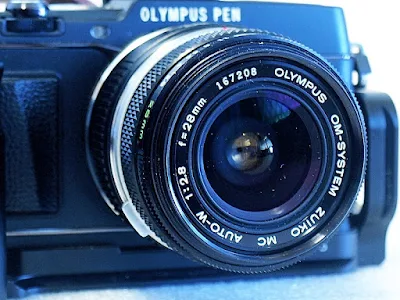When mounted on a 2x crop-sensor MFT (Micro Four-Thirds) digital camera, the Olympus Zuiko OM 28mm 1:2.8 wide-angle is the equivalent of a 56mm lens on a 35mm full-frame camera. Though a bit on the long side, this 'equivalent' does fall into the category of a 'normal prime' and might be considered as one, which is within the focal range of 40mm to 58mm.
While normal lens captures images that look natural and accurate, lenses with longer focal lengths (telephoto lenses) will compress the image forward. As can be seen from these images, the effect brings the background nearer to the front, even if only very slightly, and images may look flat as well.
With a maximum aperture of f/5.6 on the crop-sensor setup, the lens is definitely not a good candidate for good bokeh shots, if you are interested in that area or technique. Instead, the lens is the better option for landscapes, the urban scene, or set to hyperfocal distance shooting for street photography and the like.
Physically, the Olympus Zuiko OM 28mm 1:2.8, acknowledged for its high contrast, faithful reproduction of colors, and high resolving power, is an extremely compact retrofocus 6-elements in 6-groups construction, measuring only 32mm and weighing 170 grams. The lens is one of the lightest Zuiko wide-angle lenses when introduced. Interestingly enough, the Zuiko OM 28mm 1:2.8 is the only Zuiko 28mm wide-angle that can stop down to a minimum aperture of f/22 for (when you are back in the film world) added depth of field control.



















Just tested against the much touted Nikon AI-S. Sharpness and contrast are equal. The Nikon can focus to .2 meters while the Olympus only goes to .3 meters.
ReplyDelete